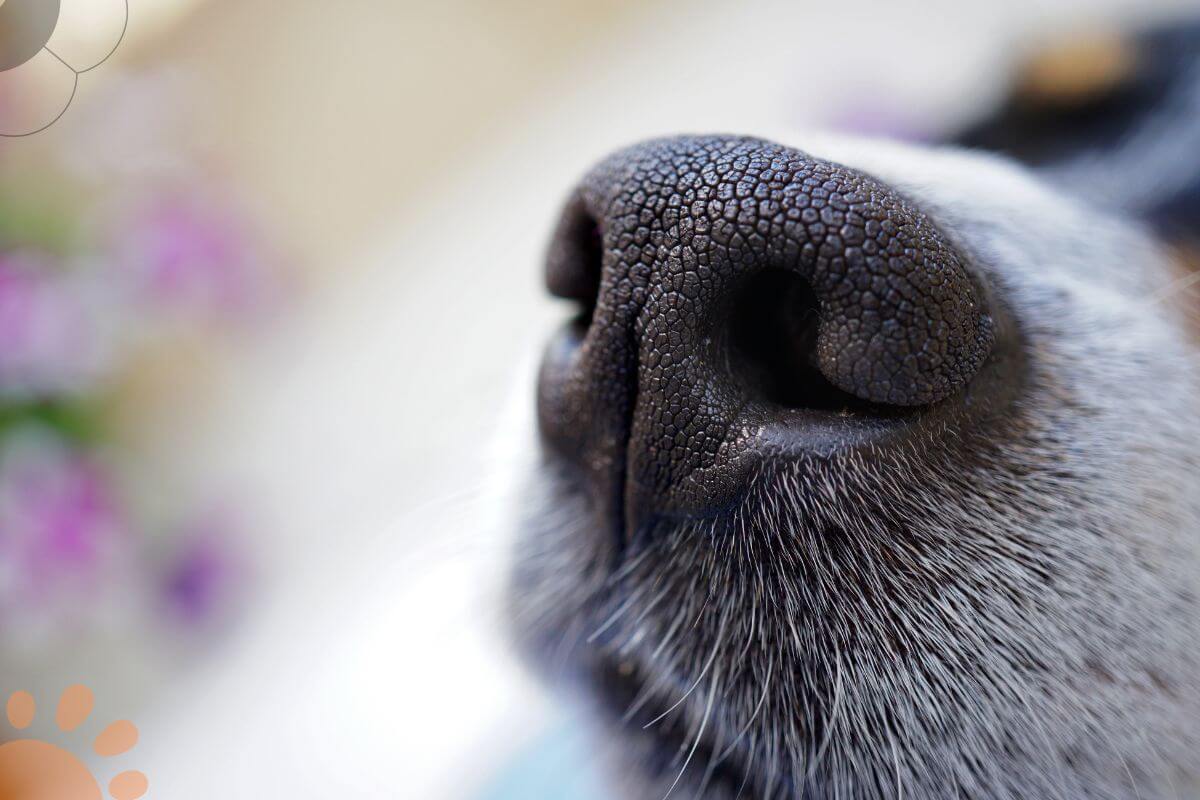As a dog owner, you may have noticed your dog using its nose for a variety of activities. Whether it is sniffing out treats, exploring new scents, or simply giving you a wet nuzzle, your dog’s nose is a key part of their daily life.
In fact, a dog’s nose is one of the most important tools they have, and there are many interesting facts about their sense of smell that every pet owner should know.
Check out these ten amazing facts about a dog’s sense of smell.

10 Fun Facts About Dogs Sense of Smell
Here are ten interesting dog nose facts that prove that a dog’s sense of smell is far more powerful than a human’s sense of smell.
Dogs have a highly developed sense of smell
Dogs have up to 300 million olfactory receptors in their noses, compared to just 5 million in humans. This makes their sense of smell more than 1,000 times stronger than our own.
A dog’s nose is unique
Just like our fingerprints, each dog has a unique nose print. The ridges, valleys, and patterns on a dog’s nose are as unique to them as our own fingerprints are to us.
A dog’s nose changes color
A dog’s nose may change color due to various factors, including age, health, and the weather.
A healthy dog’s nose is typically moist and cool, with a light color. If your dog’s nose is dry or warm, it could be a sign of illness.
A dog’s nose is constantly changing
A dog’s nose is not only unique but also constantly changing. Its shape and texture can change throughout the day, depending on the dog’s mood, environment, and health.
A dog’s nose helps them navigate
A dog’s sense of smell helps them navigate their environment and find food, water, and other essential items. It also helps them to recognize other animals and people and navigate their territory.
A dog’s nose helps regulate their body temperature
The moistness of a dog’s nose helps to regulate their body temperature by evaporating the heat from their body. This helps to keep them cool on hot days and warm on cold days.
A dog’s sense of smell can detect human emotions
Dogs have the ability to detect human emotions, such as stress, anxiety, or even happiness, through their sense of smell.
They can also pick up on pheromones, which can make them act weird when a woman has her period. Dogs can even distinguish between different emotions based on the scent they produce.
A dog’s nose can detect changes in the environment
Dogs can detect changes in the environment, such as changes in temperature, pressure, and humidity, through their sense of smell. This helps them to respond to natural disasters and other emergencies.
A dog’s nose is used for medical diagnosis
A dog’s sense of smell is so advanced that it is used in medical diagnosis. Dogs are trained to sniff out diseases such as cancer, diabetes, tuberculosis, and even the early stages of a heart attack.
A dog’s identifying smells are in the anal glands
A dog’s unique scent profile is located in its anal glands, which is why they often sniff that area on other dogs. These glands also communicate a dog’s emotional state, including anxiety and playfulness.

Wrap-Up: Dog Nose Facts
There you have it–9 interesting dog nose facts that prove how special the dog’s nose is compared to humans.
Whether they are exploring their environment, regulating their body temperature, or navigating emergencies, their sense of smell is always working to keep them safe and comfortable.
As a pet owner, it is important to understand the importance of a dog’s nose and how it helps them navigate the world around them.
